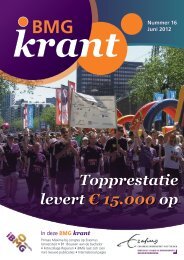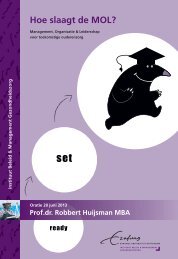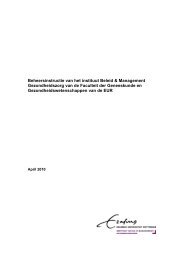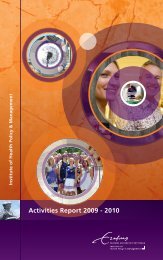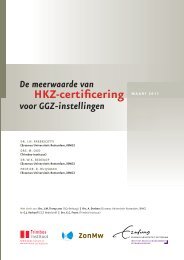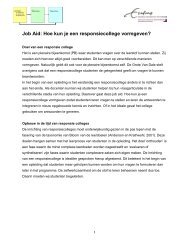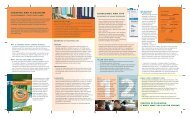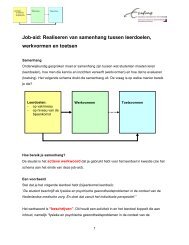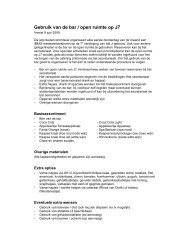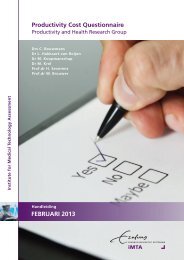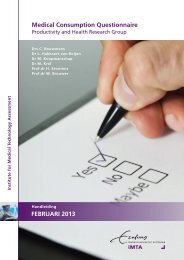Marten J. Poley - Erasmus Universiteit Rotterdam
Marten J. Poley - Erasmus Universiteit Rotterdam
Marten J. Poley - Erasmus Universiteit Rotterdam
- No tags were found...
You also want an ePaper? Increase the reach of your titles
YUMPU automatically turns print PDFs into web optimized ePapers that Google loves.
40Chapter 3child's date of birth) at 5% per year. Additionally, we calculated the outcomeapplying a discount rate of 0%.3.3 RESULTSRespondersOf the 285 patients who underwent treatment for CDH, 261 (92%) patients couldbe traced. Eighty-six of these 261 patients (33%) had died, and 7 patients(2.7%) were mentally disabled. The remaining 168 were sent questionnairescontaining questions on social and demographic characteristics, the costs oftreatment (with the exception of the direct medical costs), and its effects (theprevalence of symptoms, the medical consumption, and the overall quality oflife). The response rate was 67% (n = 112). Female patients constituted almosthalf of the responders (46%). The mean age of the responders was 14.8 years(range, 1 to 42). The nonresponders did not differ from the responders in termsof sex or age. The children in the patient group did not differ from theircontemporaries in the general population in regard to participation in education,attending a special school, or educational level. There is no indication that adultpatients differ from the general population in regard to completed education,having a partner, and number of children. Finally, fewer CDH patients were livingalone than population standards predict (significant at the 0.05 level).Questionnaires were sent to (the caregivers of) 72 children belonging to thecontrol group and returned by 53 (74%). These children were aged between 1and 17 years (mean, 7.4 years).CostsDirect medical costs. Table 3.1 presents the costs of the most important unitsthat pertain to the health care costs between the child's birth and the end of thehospital admission during which the defect in the diaphragm was closed (the firstadmission in 95% of the patients). This period lasts, on average, 91 days in thesurvivors (median, 33 days), as against 7 days in the deceased (median, 2 days).Table 3.2 shows that the mean direct medical costs are considerable (€ 33,080;1 Euro = 0.87 US dollar). The distribution of these costs appears to be skew.Fifty-eight percent of the costs are spent on the 21% most expensive patients.The average periods of intensive care and medium care are 24 days (median, 14days) and 4 days (median, 0 days), respectively. The difference between thesurvivors and the deceased (significant at the 0.05 level) and that betweenpatients treated with ECMO and patients not treated with ECMO (not significant atthe 0.05 level) also are shown.Direct nonmedical costs. The transportation costs amount to € 356 up to the ageof 45 years.





